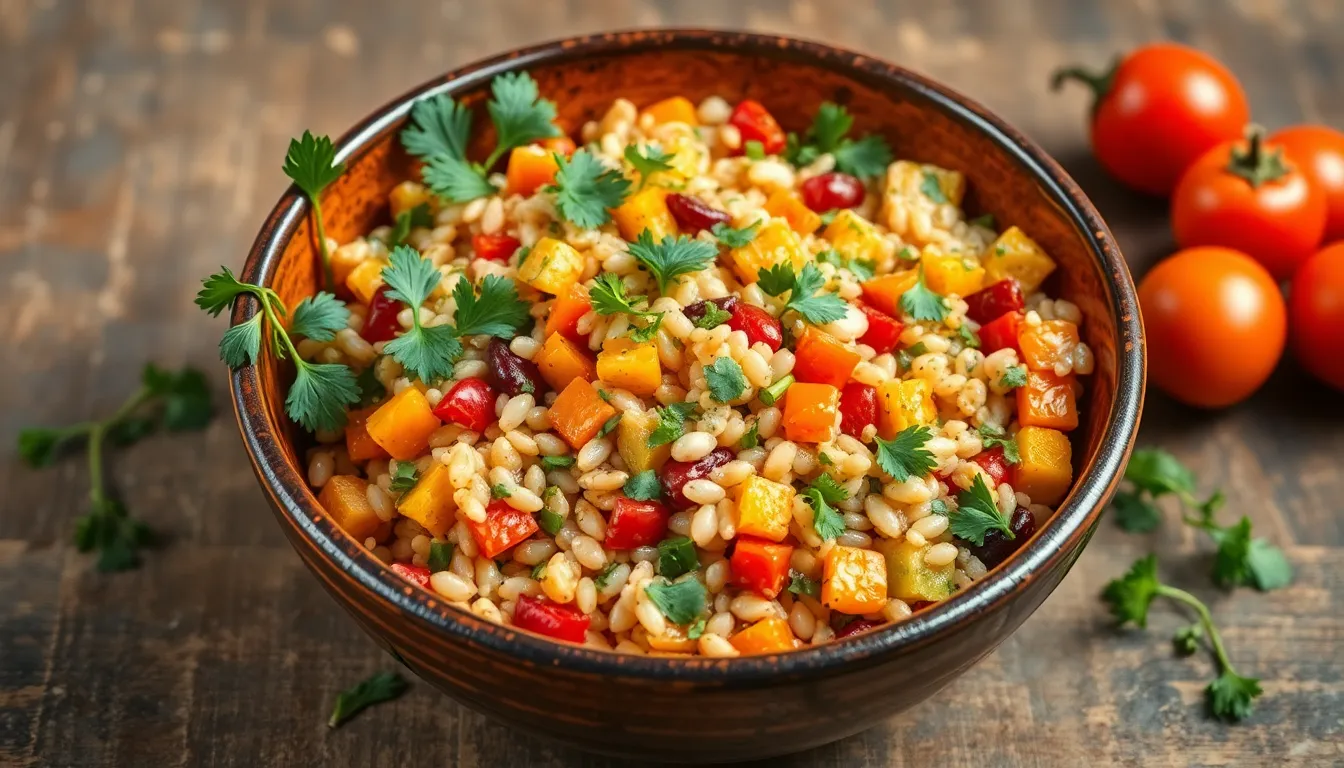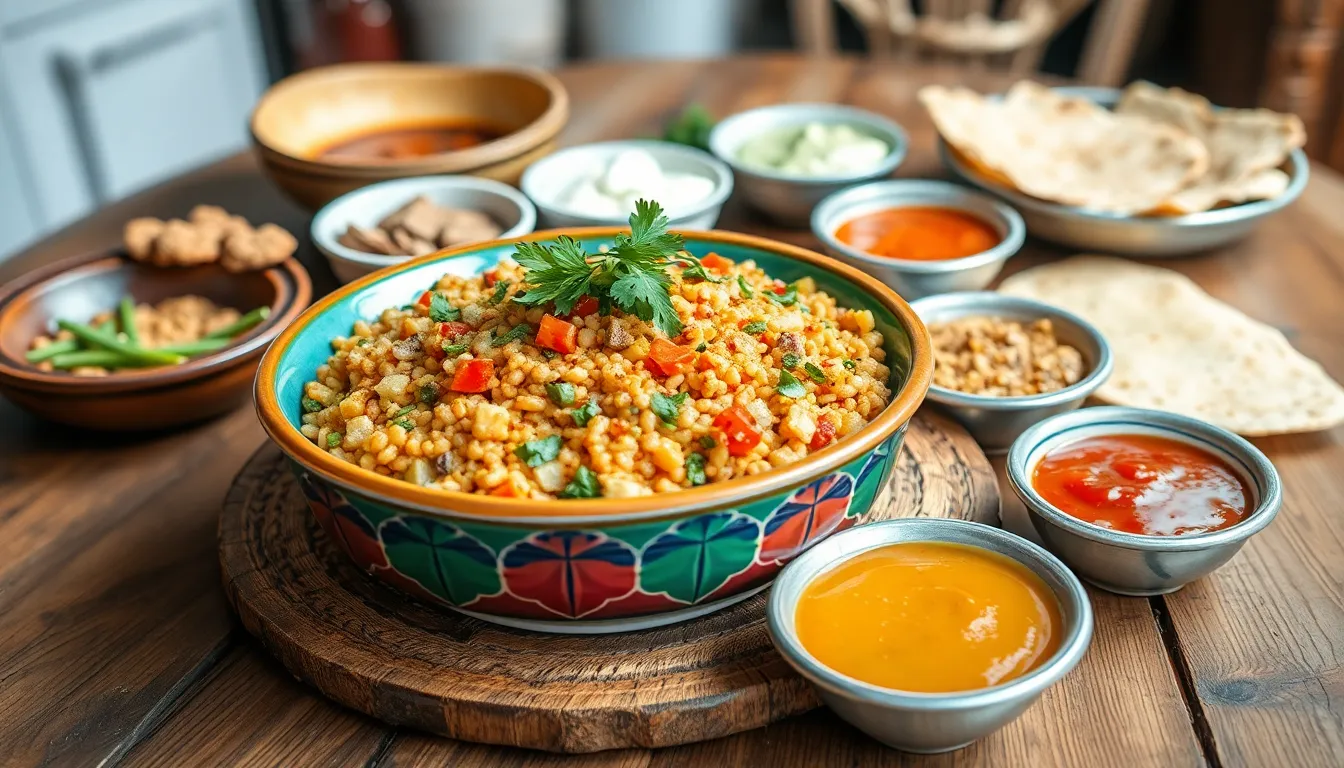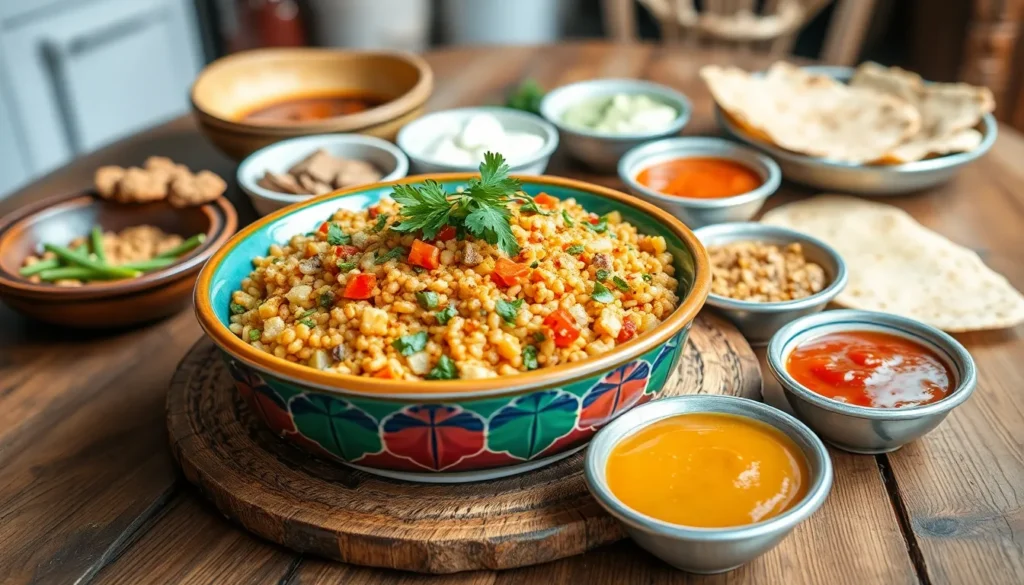Table of Contents
ToggleIn the world of culinary delights, few dishes spark curiosity quite like falotani. This vibrant dish, with its rich flavors and unique textures, is a feast for both the eyes and the palate. Imagine a tantalizing blend of spices that dances on your taste buds, leaving you craving more. It’s not just food; it’s an experience that transports you to a bustling market filled with the aroma of sizzling delights.
But falotani isn’t just about taste—it’s a conversation starter. Whether you’re impressing friends at a dinner party or trying to win over that special someone, this dish has a knack for breaking the ice. So why not dive into the delicious world of falotani? Get ready to uncover the secrets behind this culinary gem and discover how it can elevate your dining experience to a whole new level.
What Is Falotani?
Falotani is a colorful dish featuring a blend of spices that contribute to its distinct taste. Known for both its visual appeal and rich flavors, falotani offers a variety of textures that enhance the overall dining experience. Ingredients typically include vegetables, grains, and proteins, each chosen for their complementary qualities.
Preparation methods often involve grilling, steaming, or frying, which brings out the best in each component. Many cultures enjoy falotani, adding unique regional twists. For example, variations may include different spice blends or locally sourced ingredients.
Serving falotani at social gatherings invites conversation, enticing guests to share their experiences. It’s not just a meal; it’s a culinary exploration. Presentation also plays a vital role; vibrant colors draw attention and enhance the dining atmosphere.
Culinary enthusiasts appreciate falotani for its adaptability, allowing for creative experimentation in both home and restaurant kitchens. Chefs often emphasize seasonal ingredients, keeping the dish fresh and exciting. Dietary preferences are easily accommodated, with vegan and gluten-free options readily available.
Falotani stands out not just for its taste but also for its ability to connect people through food. Its versatility makes it suitable for any occasion, from casual gatherings to festive celebrations. Embracing falotani means celebrating diverse culinary traditions that enrich any dining experience.
The History of Falotani

Falotani boasts a rich heritage that reflects the culinary diversity of its origins. This dish embodies the fusion of flavors from various cultures, making it significant in numerous communities.
Origins and Cultural Significance
Falotani traces its roots to ancient culinary practices, where spices and seasonal ingredients played pivotal roles in daily meals. Many cultures have embraced falotani, incorporating unique spices that highlight local ingredients. It symbolizes not only nourishing food but also serves as a cultural emblem during festive occasions. Social gatherings often feature falotani, where shared meals foster connections among family and friends. Its vibrant colors and enticing aromas invite exploration, allowing diners to experience stories tied to each ingredient. Celebrations marked by falotani emphasize community bonds, showcasing the dish’s enduring cultural importance.
Traditional Uses
Traditionally, falotani served as a staple in family meals, showcasing ingredients available from markets or home gardens. Home cooks have prepared variations of falotani for generations, adapting recipes to reflect local tastes and dietary practices. Hosts often present this dish during celebrations, where it acts as a centerpiece that brings guests together. Variations may include seasonal vegetables, proteins, and grains that promote balance and nutrition. Eateries frequently feature falotani on their menus, appealing to diverse culinary preferences. Dietary needs are met with options like vegan or gluten-free falotani, ensuring inclusivity. This versatility in preparation and presentation further solidifies its role in traditional dining practices.
The Benefits of Falotani
Falotani offers numerous advantages, enhancing both health and well-being. This dish combines various ingredients, providing an array of nutrients crucial for a balanced diet.
Nutritional Value
Falotani is rich in essential vitamins and minerals. It’s high in fiber due to its vegetable base, promoting digestive health. Proteins from legumes or meats contribute to muscle repair and growth. Additionally, the blend of spices in falotani includes antioxidants that help combat oxidative stress. A serving often contains significant amounts of vitamin C from peppers and vitamin A from leafy greens, boosting overall immunity. Many individuals appreciate falotani for its ability to adapt to dietary preferences while still delivering substantial nutritional benefits.
Therapeutic Properties
Falotani possesses several therapeutic properties worth noting. Spices such as turmeric provide anti-inflammatory effects that can alleviate discomfort. Garlic and ginger, commonly used in this dish, support heart health and improve circulation. Many enjoy the mood-enhancing benefits of sharing a meal like falotani, as it fosters connections among family and friends. The preparation methods also enhance its health benefits, with steaming retaining more nutrients compared to frying. Overall, incorporating falotani into meals can contribute to both mental and physical well-being.
How to Incorporate Falotani into Your Diet
Incorporating falotani into a daily diet is simple and rewarding.
Recipes and Cooking Tips
Explore various recipes that highlight falotani’s vibrant ingredients. Grill, steam, or stir-fry vegetables alongside selected proteins for a balanced meal. Combine quinoa or brown rice as a base to enhance texture and nutrition. Experiment with spices such as turmeric, cumin, and coriander for authentic flavor. Adjust cooking times based on the ingredients used, ensuring everything remains tender yet crisp. Create a colorful presentation by arranging the ingredients artistically on the plate. Depending on individual preferences, consider adding nuts or seeds for an extra crunch.
Serving Suggestions
Serve falotani in shared bowls to encourage communal dining experiences. Pair the dish with chutneys or dips that complement its flavors, such as yogurt or tomato salsa. This method enriches the meal while providing options for varying tastes. Incorporate seasonal vegetables to highlight freshness and local produce, particularly during harvest months. Offer falotani alongside flatbreads or rice to create a complete dining experience. Allow guests to customize their plates, enhancing their engagement with the meal. Foster conversations by discussing the diverse origins of falotani while sharing this delightful dish.
Falotani embodies the essence of culinary creativity and cultural connection. Its vibrant flavors and adaptable nature invite everyone to explore new tastes while celebrating diverse traditions. This dish not only nourishes the body but also enriches social interactions, making every meal a meaningful experience.
With its rich history and health benefits falotani stands as a testament to the power of food in bringing people together. Whether enjoyed at a festive gathering or a casual family dinner it offers a delightful way to enhance any dining occasion. Embracing falotani in daily meals can transform ordinary moments into extraordinary culinary adventures.




